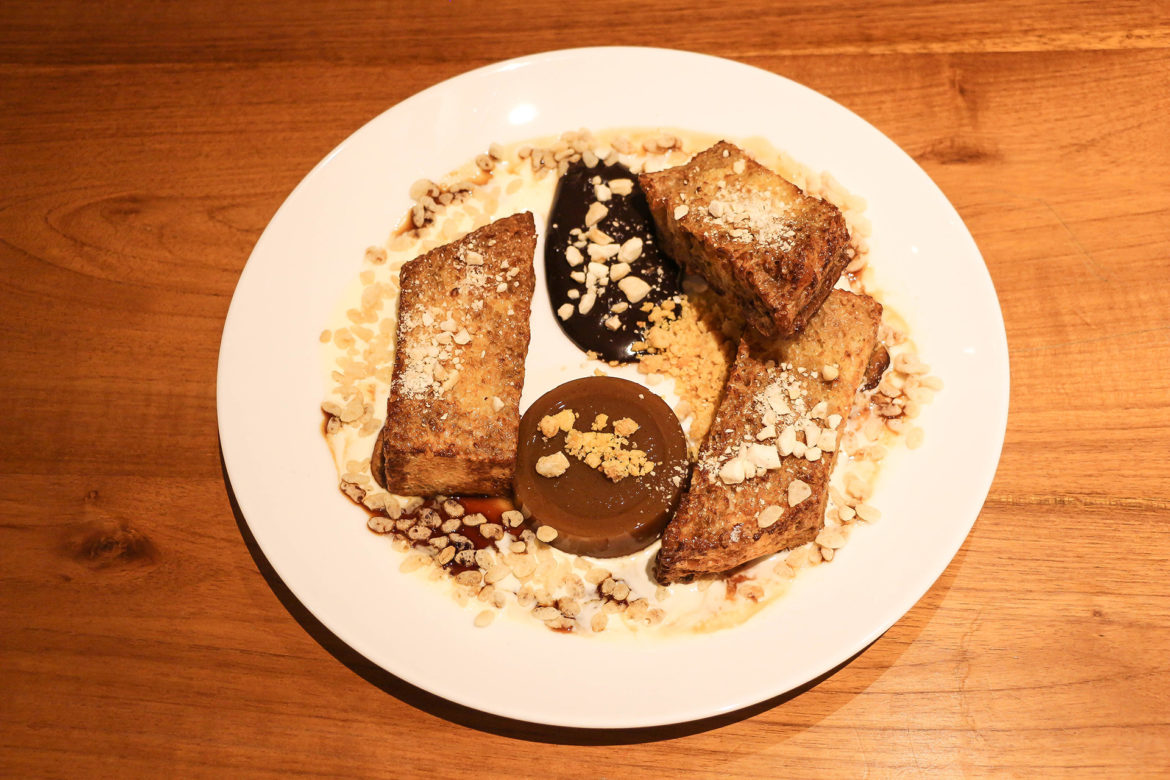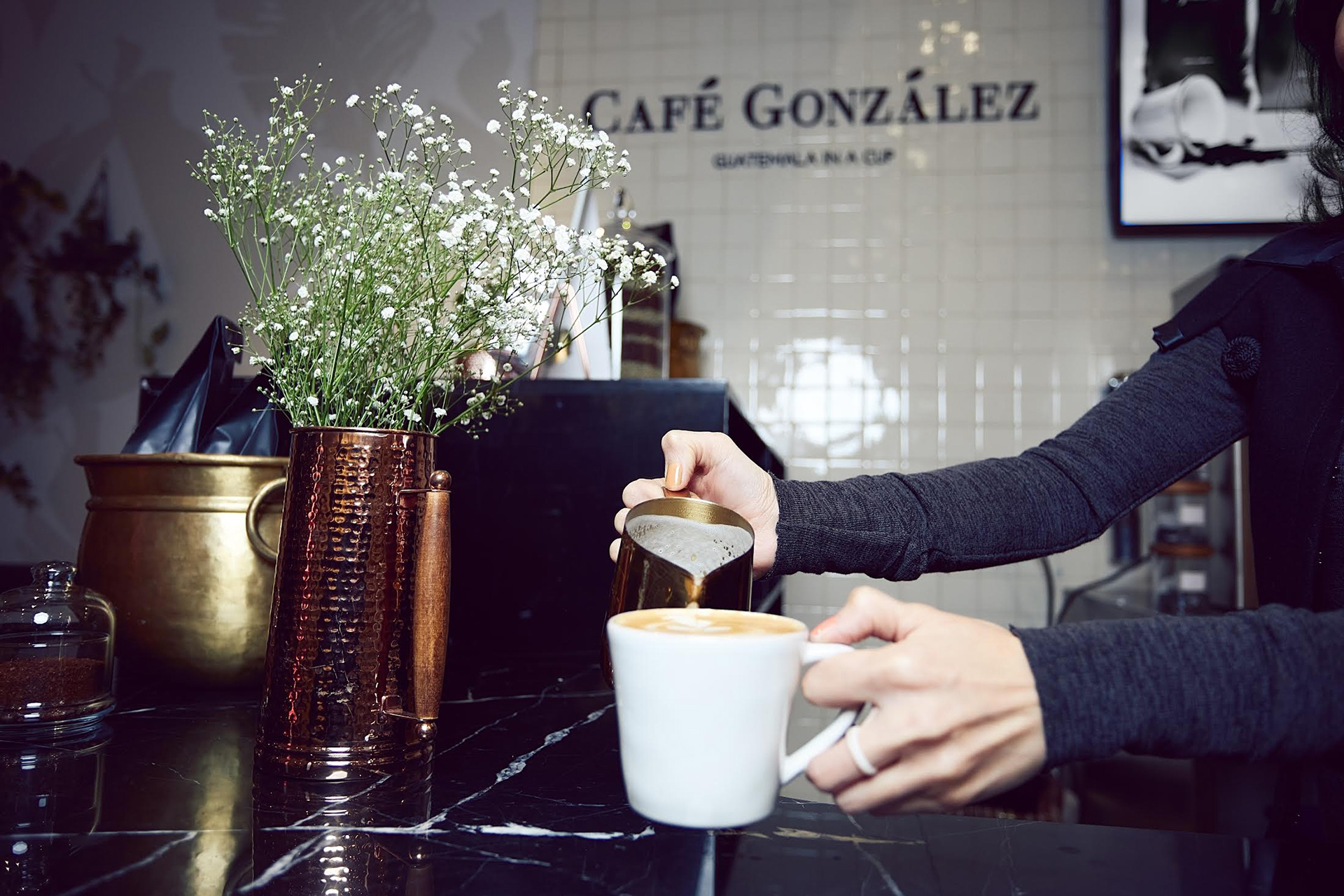
Stratford Avenue marks the end of Colombo. It separates Sri Lanka’s capital city from it’s suburbs to the southeast—up and down, the short stretch of road is dotted with small shops and hole-in-the-wall restaurants, and hums with faint chantings of a nearby Buddhist temple. Here is where Kopi Kade calls home.
Opened in 2016, the cafe stood out at the gate. A product of Nimeshan Namasivayam, Kopi Kade directly translates to “coffee shop” in both Sinhala and Tamil. It’s also the name of a long running and extremely famous soap opera. The show centered around the idea of a kopi kade as a community hub.

The unassuming facade of Namasivayam’s Kopi Kade gives way to a clean, former warehouse—designed by local architect Manju Wijeratne, the space is decorated with clean-cut teak tables and chairs, bronze light fixtures, and the work of artist Shaanea Mendis.
Before founding Kopi Kade, Namasivayam worked as a barista, coffee roaster, and a coffee taster for more 15 years in Australia, where he lived for most of his life.
“It’s more about ensuring consistency,” says Namasivayam of running a successful cafe. “We use very good water filtration systems and always fresh milk.” He’s also using Kopi Kade to build Colombo’s barista community, offering workshops to local restaurant staff and home baristas alike.

The menu here sees a constant change, with rotating single-origin coffees from Costa Rica to Ethiopia to Indonesia. “We change the coffee every three to four weeks, not just from different countries, but from different roasters,” Namasivayam says.
Kopi Kade also has its own 1kg Giesen abutting the back wall, on which Namasivayam trial roasts small lots of Sri Lankan coffee.
“We want to see if we can improve farming and processing techniques, which would result in a better cup of quality coffee,” Namasivayam says of his relationships with a few local smallholder coffee farmers. “There’s a lot of potential to produce good Sri Lankan coffee, as the terroir is perfect for coffee growing in the hill country.”

For espresso beverages, the cafe uses a two-group Victoria Arduino VA388 Black Eagle along with two Mythos One grinders. Brewed coffee is offered either on AeroPress or Hario V60 and ground with a Comandante hand grinder. There’s also a “Sri Lankan Style” cold brew made sweet to match Colombo’s palate—it’s a darker-roasted African coffee mixed with 40-percent milk.

Kopi Kade’s food menu is filled with modern takes on traditional Sri Lankan dishes, like spiced lamb and prawn sliders and the Coconut French Toast—fluffy, eggy, pani pol bread covered in caramelized coconut flakes and coffee-infused coconut sugar syrup, gently spiced with cardamom, cloves, and cinnamon.
At Kopi Kade, Namasivayam has built a community of regulars with whom he shares not just new coffees, but sizable doses of information about production, taste, brewing, and coffee culture. In doing so, he hopes his coffee shop can be more than just that. “It’s an experiential learning experience,” Nimeshan says, and one with the name recognition that just may draw the masses.
Zinara Rathnayake is a freelance journalist based in Colombo, Sri Lanka. This is Zinara Rathnayake’s first feature for Sprudge.
Photos by Nathan Mahendra
























